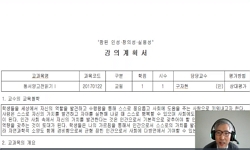외국어로써 한국어를 학습한 중국인의 한국어 글 읽기 처리는 한국어 모국어 화자와 다른 안구운동 패턴 양상을 보일 것이다. 또한 중국어-한국어 후기 이중언어자는 한국어 단어 의미 처리...
http://chineseinput.net/에서 pinyin(병음)방식으로 중국어를 변환할 수 있습니다.
변환된 중국어를 복사하여 사용하시면 됩니다.
- 中文 을 입력하시려면 zhongwen을 입력하시고 space를누르시면됩니다.
- 北京 을 입력하시려면 beijing을 입력하시고 space를 누르시면 됩니다.

중국어-한국어 후기 이중언어자들의 한국어 문장 읽기 안구운동 추적 실험에서 나타난 단어 처리 = Word processing observed in an eye-tracking experiment of Korean sentence reading by Chinese-Korean late bilinguals
한글로보기https://www.riss.kr/link?id=A109262326
- 저자
- 발행기관
- 학술지명
- 권호사항
-
발행연도
2024
-
작성언어
Korean
- 주제어
-
등재정보
KCI등재
-
자료형태
학술저널
- 발행기관 URL
-
수록면
205-224(20쪽)
- DOI식별코드
- 제공처
-
0
상세조회 -
0
다운로드
부가정보
국문 초록 (Abstract)
외국어로써 한국어를 학습한 중국인의 한국어 글 읽기 처리는 한국어 모국어 화자와 다른 안구운동 패턴 양상을 보일 것이다. 또한 중국어-한국어 후기 이중언어자는 한국어 단어 의미 처리에서 중국어와 유사한 지식을 활용하고 중국어와 의미 관계가 가까운 한국어 한자어를 고유어보다 빠르게 처리 할 가능성이 있다. 이 연구는 외국어로써 한국어를 학습한 중국어-한국어 후기 이중언어자가 한국어 문장 읽기에서 일반적으로 한국어 모국어 화자의 글 읽기에서 나타나는 단어 빈도 효과가 나타나는지 알아보고 나아가 한자어 처리에 이득 효과가 있는지 확인하기 위해 고유어 조건과 한자어 조건으로 나누어 문장읽기 안구운동 추적 실험을 하였다. 실험 결과, 외국어로써 한국어를 학습한 중국인은 한국어 모국어 화자와 다르게 빈도 효과가 나타나지 않았으며 한자어 조건이 고유어 조건보다 반응 시간이 짧게 나타났다. 실험 결과를 바탕으로 중국어-한국어 후기 이중언어자들이 외국어로써 한국어를 학습할 때 모국어 단어 학습과 유사한 의미 중심의 전략을 활용하고 고유어 보다 한자어의 학습이 선행되어 한자어 의미 처리가 빠르다는 가능성을 보여준다.
다국어 초록 (Multilingual Abstract)
The reading processes of Chinese-Korean bilinguals, who have learned Korean as a foreign language, are expected to show different eye movement patterns compared to native Korean speakers. Moreover, these bilinguals may utilize knowledge similar to Chi...
The reading processes of Chinese-Korean bilinguals, who have learned Korean as a foreign language, are expected to show different eye movement patterns compared to native Korean speakers. Moreover, these bilinguals may utilize knowledge similar to Chinese in processing Korean word meanings, especially for Sino-Korean words that share semantic relationships with Chinese, potentially processing them faster than native Korean words. This study observed whether Chinese-Korean bilinguals show the word frequency effect typically observed in Korean native speaker reading during Korean sentence reading. Additionally, eye-tracking experiments were conducted under conditions distinguishing between native Korean words and Sino-Korean words to investigate whether there is an advantage in processing Sino-Korean words. The results of the experiments showed that Chinese-Korean bilinguals did not show the same frequency effects as native Korean speakers, and they showed shorter response times in the Sino-Korean condition compared to the native Korean condition. Based on these findings, it is suggested that Chinese-Korean bilinguals, when learning Korean as a foreign language, employ strategies focused on meaning similarity akin to their native language vocabulary acquisition strategies, and they process Sino-Korean words faster than native Korean words, suggesting a potential advantage in learning and processing Sino-Korean vocabulary.
동일학술지(권/호) 다른 논문
-
한글 단어 재인에서 음절 전위 효과의 재검토:표기 처리와 형태소 처리의 영향 분석
- 한국인지과학회
- 배성봉
- 2024
- KCI등재
-
비전문가의 평가 정확도 향상 방안 탐색: 공통 평가 항목 점수 기반 가중치 함수를 활용한 점수 보정 방법 연구*
- 한국인지과학회
- 송민해
- 2024
- KCI등재




 ScienceON
ScienceON DBpia
DBpia






